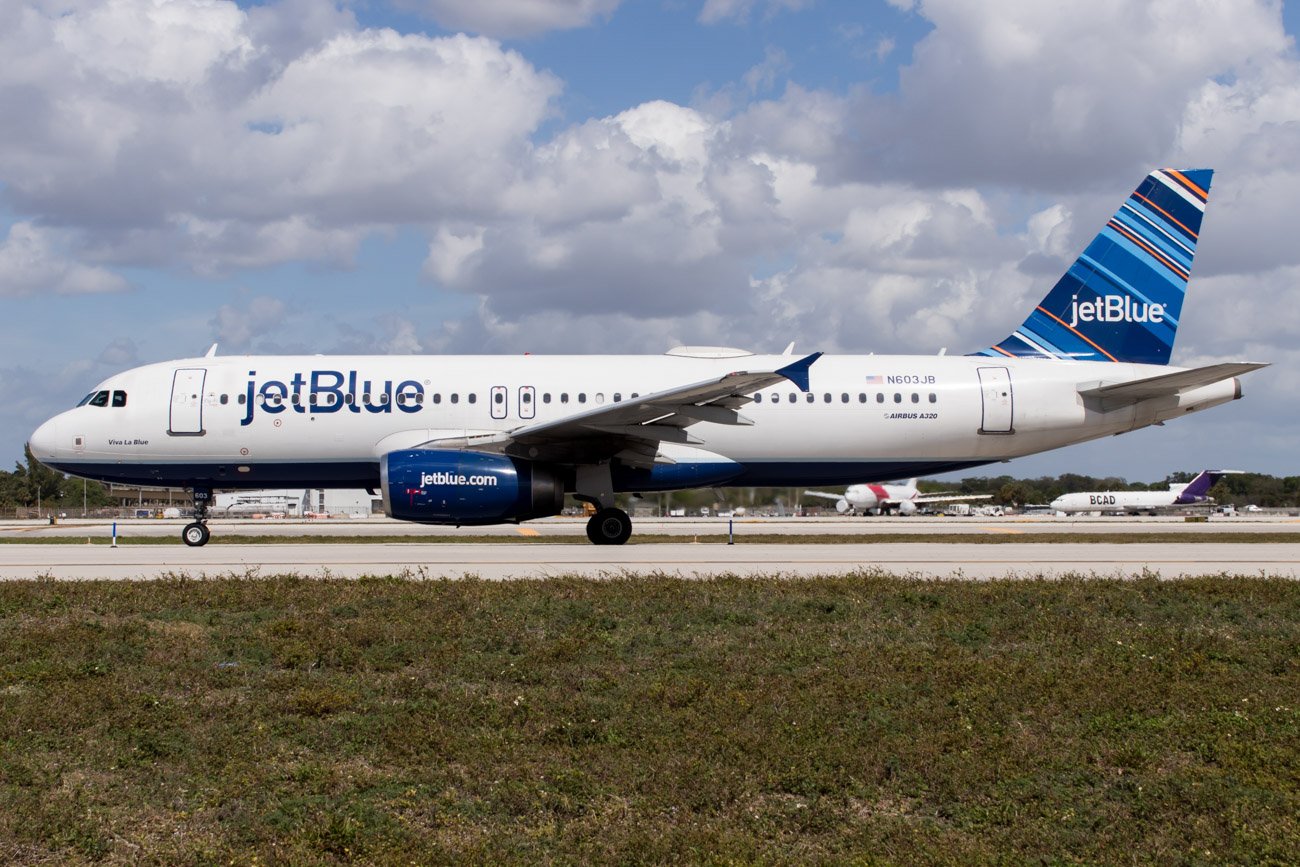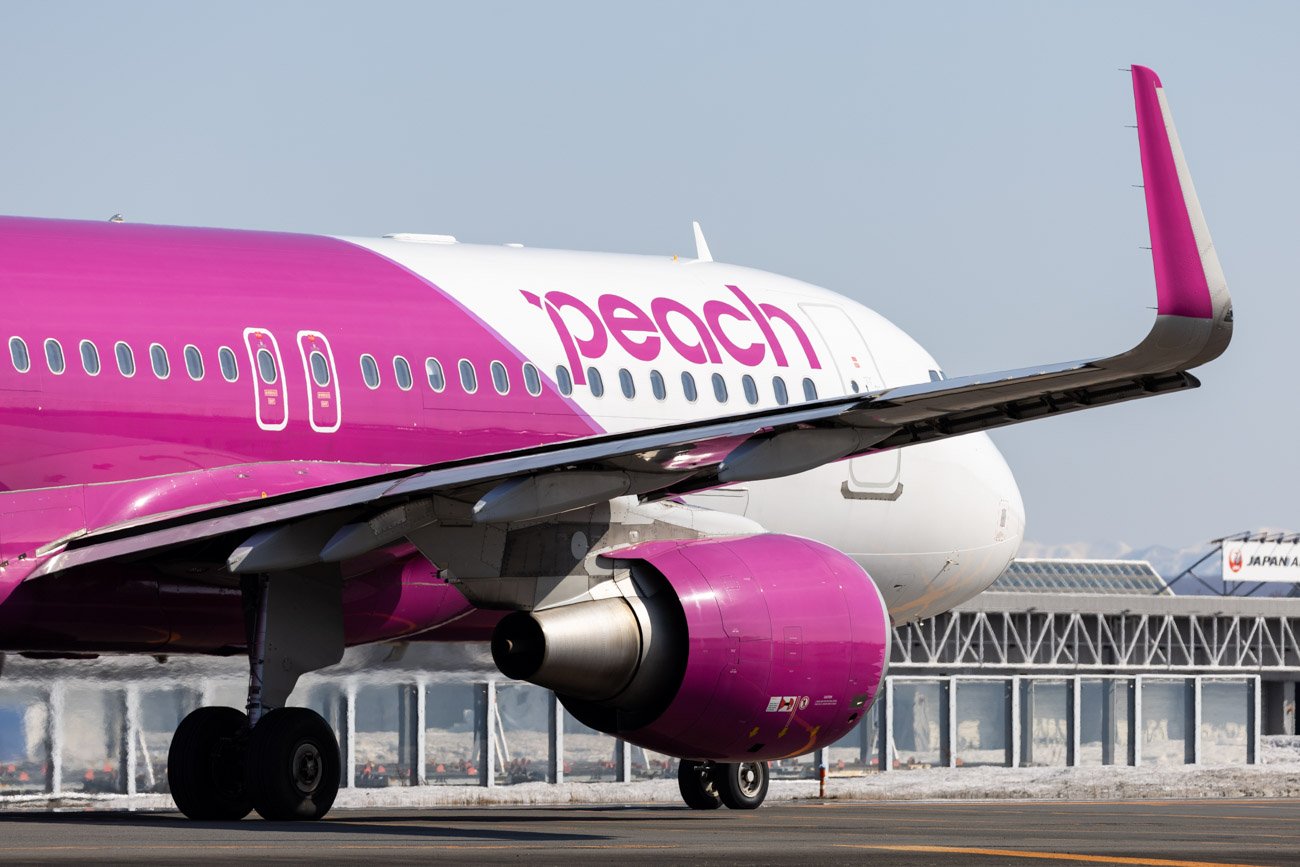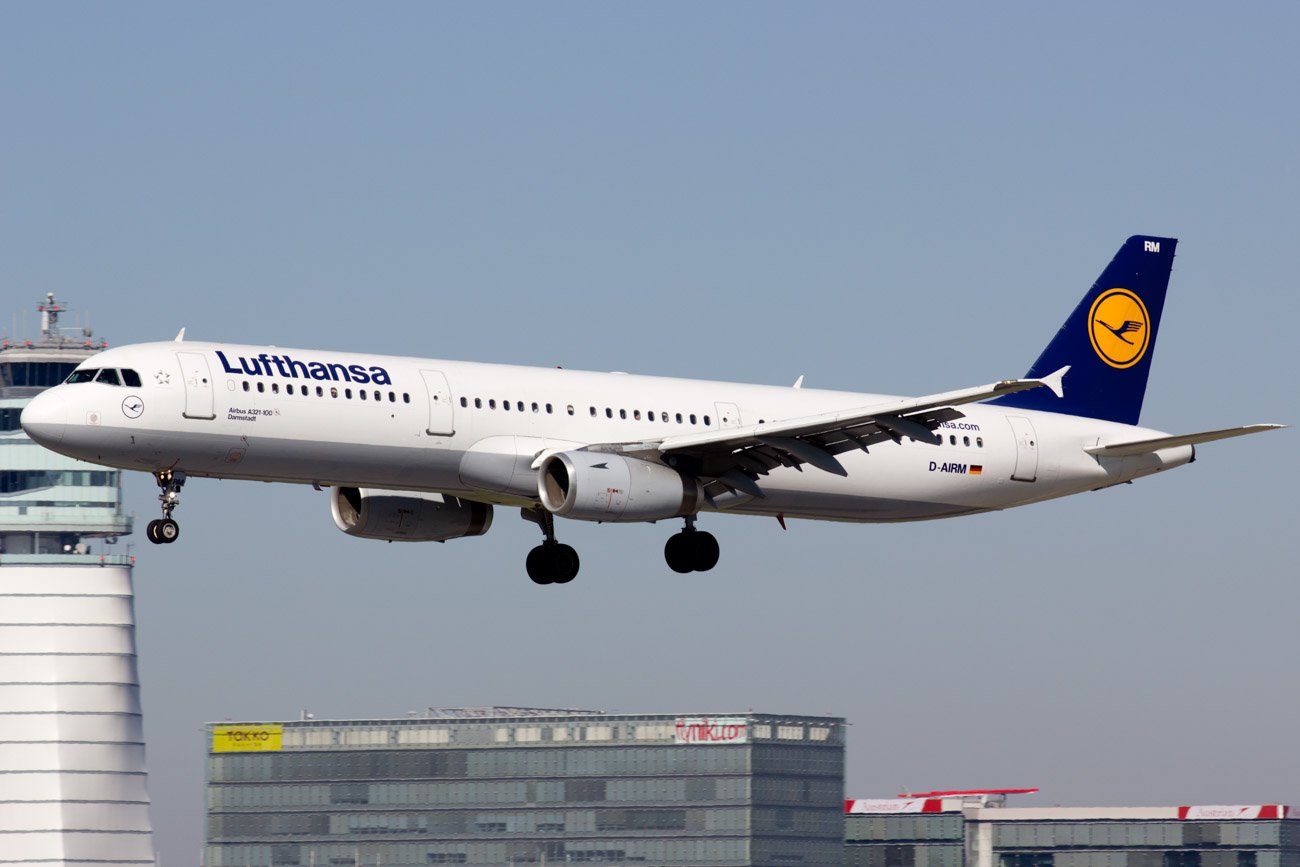If you’re flying short or mid-haul these days, there’s a good chance you’ll be on an A320 family aircraft; one of the world’s most successful commercial aircraft types.
The A320 first started flying in airline fleets in 1988, and the stretched A321 followed in 1994. Both variants have been revamped with more efficient new engine options (neo) available from 2016 and 2017 respectively. In this article, I’ll chart the histories of these two similar aircraft, and see how they measure up against each other.

History
The Airbus A320 narrow-body twinjet family first flew commercially in 1988. The longer A321 was the first derivative of the A320 and first flew commercially in 1994.
In December 2010, Airbus announced the A320neo (new engine option), which entered service in 2016. With more efficient engines and other efficiency improvements, including winglets (Sharklets), the A320neo provides improved fuel economy. With the introduction of the A320neo, older A320 versions became known as the A320ceo (current engine option).
The new engine technology available on the neo aircraft with its improved fuel efficiency provides airlines with lower operating costs and increased range. The neo engines are also quieter, improving travel comfort in the aircraft cabin.
The A321 is now also offered as an A321neo variant, with this aircraft first flying commercially in 2017; 2023 will see the introduction of the extra long-range version of the A321 – the A321XLR.
| Aircraft Model | First In Service |
| A320-100ceo | 1988 |
| A320-200ceo | 1989 |
| A321-100ceo | 1994 |
| A321-200ceo | 1997 |
| A320neo | 2016 |
| A321neo | 2017 |
| A321LR | 2018 |
| A321XLR | 2023 (est.) |
The first A320 aircraft to be manufactured were classified as A320-100s. Only around twenty A320-100s were produced before Airbus began to roll out A320-200s. The A320-200 offered increased fuel capacity and increased range compared to the A320-100.

The A321 is a longer version of the A320 with a 6.93m fuselage stretch enabling higher passenger capacity. The initial A321-100 debuted commercially in 1994, and was quickly superseded by the A321-200. The A321-200 came with an increased fuel tank capacity, maximum take-off weight, and range. The A321-200 debuted commercially in 1997.
The neo versions of the A320 and A321 started working in 2016 and 2017 respectively. These variants provide two advanced engine choices – CFM International’s LEAP-1A and Pratt & Whitney’s PurePower PW1100G-JM geared turbofan, as well as fuel-saving Sharklets on the wingtips. These improvements bring per-seat fuel improvements of 20%, and longer ranges (up to 500nm) or two tonnes of additional payload.
The longer-range A321LR first started flying commercially in 2018 and offers a range of up to 4,000nm. Airbus announced the A321XLR at the 2019 Paris Air Show. This A321neo will deliver an additional 15% range above the A321LR. Airlines are showing strong interest in the XLR – Airbus has received sizable orders from a variety of carriers, including American Airlines, Delta Air Lines, IndiGo, Wizz Air, and Qantas. Production and testing of the XLR are on schedule for the first deliveries in 2023.

Dimensions
Let’s take a look at some key physical characteristics and see how these two aircraft measure up against each other:
| Aircraft Model | Length/m | Wingspan/m | Tail Height/m | Fuselage Width/m | MTOW/ kg |
| A320ceo | 37.57 | 35.80 | 11.76 | 3.95 | 78.0 tonnes |
| A320neo | 79.00 tonnes | ||||
| A321ceo | 44.51 | 35.80 | 11.76 | 3.95 | 93.50 tonnes |
| A321neo/LR | 97.00 tonnes | ||||
| A321XLR | 101.00 tonnes |

Range
The ranges of the A320ceo, A320neo, and A321ceo variants are similar at around 3,200 to 3,400nm, whereas the A321neo offers a slightly longer range of 4,000nm, thanks to its LR variant, and the A321XLR will offer a further extended range of 4,700nm.
All A320 variants are ETOPS (Extended-range Twin-engine Operational Performance Standards) certified for 180 minutes since 2004 (EASA) and 2006 (FAA).
| Aircraft Model | Range |
| A320ceo | 6,200km/3,350nm with Sharklets |
| A320neo | 6,300km/3,400nm |
| A321ceo | 5,950km/3,200nm with Sharklets |
| A321neo | 6,850km/3,700nm |
| A321LR | 7,400km/4,000nm |
| A321XLR | 8,700km/4,700nm |
The A321LR’s extended range of up to 4,000nm, is possible as it is fitted with additional fuel tanks.
The A321XLR will further extend the A321 range up to 4,700nm, made possible by an increased maximum take-off weight of 101 tonnes, enabling the A321XLR to be fitted with additional fuel tanks. The A321XLR will be suited for transatlantic routes and with a flying time of up to eleven hours will allow airlines to tap into new long-haul markets not previously accessible with narrowbody aircraft.

Seating Capacity
Airbus’ typical 2-class and maximum seating capacities for the A320 and A321 variants are shown in the table below. However, these numbers are for comparison purposes only, as in practice airlines fit out their aircraft in many different seating configurations and actual seat numbers can vary significantly between different variants, even within the same airline.
| Aircraft | Typical 2-Class Seating Capacity | Maximum Seating Capacity |
| A320ceo | 140 – 170 | 180 |
| A320neo | 150 – 180 | 194 |
| A321ceo | 170 – 210 | 220 |
| A321neo | 180 – 220 | 244 |
| A321XLR | 180 – 220 | 244 |
In practice, we see a variety around these numbers as airlines have fitted out these aircraft in 1-class, 2-class, 3-class, and even 4-class configurations. In some premium cabins, there are lie-flat seats which reduce overall seat density.
Looking at a variety of airlines operating A320 and A321 aircraft (Air Asia, American Airlines, ANA, British Airways, Cebu Pacific, EasyJet, Frontier Airlines, Indigo, JetBlue, Lufthansa, Qatar Airways, Spirit Airlines, Starlux, Vistara, United Airlines, Wizz Air), actual fitted-out seat numbers typically vary as follows:
| Aircraft | 1-class | 2-class | 3-class | 4-class |
| A320 | 168 – 188 | 144-186 | 150-164 | – |
| A321 | 200 – 239 | 154 – 240 | 138 – 196 | 102* |
*American Airlines A321-200 V1 (First Class – 10, Business Class – 20, Premium Economy Class (Main Cabin Extra) -36, Economy Class – 36)
Customers and Orders
As of the end of May 2022, an incredible total of 14,568 A320 and A321 have been ordered, of which 8,789 (60%) have been delivered. This means that Airbus has a huge backlog of A320 and A321 neo orders yet to be delivered.
The A320 family (including A318, A319, A320, and A321) has received a total of 16,206 orders to the end of May 2022, not far behind the world’s most ordered commercial aircraft family, the Boeing 737, with a total of 17,662 orders to the end of May 2022.
The graph below shows the number of orders and deliveries for each of the A320ceo, A320neo, A321ceo, and A321neo:

You can see from the graph above that almost all A320ceo and A321ceo orders have been delivered and the order backlogs are mainly for the A320neo (39% of orders delivered) and the A321neo (18% of orders delivered).
As of the end of May 2022, the top 3 customers for each aircraft variant are as follows:
| Top 3 Customers | A320ceo Orders |
| NAS Aviation Services | 236 |
| ILFC | 213 |
| AirAsia | 188 |
| Top 3 Customers | A320neo Orders |
| Indigo | 344 |
| Undisclosed | 262 |
| Avolon | 181 |
| Top 3 Customers | A321ceo Orders |
| Delta Airlines | 127 |
| US Airways | 121 |
| ILFC | 91 |
| Top 3 Customers | A321neo Orders |
| Indigo | 386 |
| AirAsia | 366 |
| Wizz Air | 359 |
For the A320 and A321 combined orders as of the end of May 2022, the top 20 customers are as follows:
| Top 20 Customers | A320 + A321 Orders |
| Indigo | 830 |
| AirAsia | 592 |
| NAS Aviation Services | 507 |
| Wizz Air | 490 |
| Undisclosed | 420 |
| BOC Aviation | 416 |
| Air Lease Corporation | 348 |
| AERCAP | 344 |
| Frontier Airlines | 328 |
| Easyjet | 320 |
| Lufthansa | 311 |
| ILFC | 304 |
| Delta Airlines | 282 |
| Jetblue Airways | 278 |
| SMBC Aviation Capital | 277 |
| China Eastern Airlines | 266 |
| CALC | 251 |
| Avolon | 227 |
| Lion Air | 222 |
| China Southern Airlines | 220 |
What strikes me from the above table is the high proportion of A320 and A321 orders going to leasing companies. Based on Airbus’ figures, leasing companies account for 27% of total A320 and A321 orders. Also, we can see that ‘low cost’ airlines are also very significant A320 and A321 customers.
Airlines customers account for eleven of the twenty A320/A321 customers, and of these eleven, six are ‘low cost’ airlines. ‘Low cost’ airlines (Indigo and AirAsia) are also the top two customers for the A320 and A321 combined.

Interior Design
With a common fuselage cross-section, the A320 and A321 offer similar seating layouts with a single aisle and six seats across in economy and premium economy classes. The versatility of these aircraft to offer efficient operations over short to medium-haul routes means that many airlines have fitted out premium cabins, including some with lie-flat beds.
Where premium cabins are installed, airlines typically adopt a 2-2 seating arrangement in business and first class, although where lie-flat beds are installed the arrangement may be 1-1. JetBlue’s A321 premium cabin layouts with lie-flat beds include a 1-1 layout as well as a 2-2 + 1-1 alternating layout where there are 5 rows in the premium cabin, three rows are laid out 2-2, and two rows are laid out 1-1.
Airbus’ ‘Airspace’ interior available on the A321neo and A321XLR was adapted from the A330 and A350 cabin concepts and features customizable LED lighting effects, slimmer sidewall panels allowing 18inch wide seats in economy class, and the largest overhead compartments available in any narrowbody aircraft.

A320 vs. A321: Summary
The A320 and A321 are key members of the A320 family and both are incredibly successful aircraft within Airbus’ commercial jet offering. With more than 14,000 orders combined, the A320 and A321 are some of the world’s most successful and common commercial airliners.
As the A320 family has evolved over time, fuel efficiency and ranges have extended, increasing its versatility and the variety of routes that it can fly. Initially used primarily as short-haul aircraft, airlines are now fitting out the later versions of these aircraft, such as the A321LR, with premium cabins and deploying them on longer routes. JetBlue’s transatlantic services between London and the US East Coast are a good example.
The A321XLR is expected to up the ante even further with its even longer range, allowing flight times of up to eleven hours. The A321XLR’s long-range capabilities are likely to be successfully deployed on many longer ‘thin routes’ where there is sufficient demand to operate a multi-class service, but where the use of widebody aircraft may not be commercially attractive.
